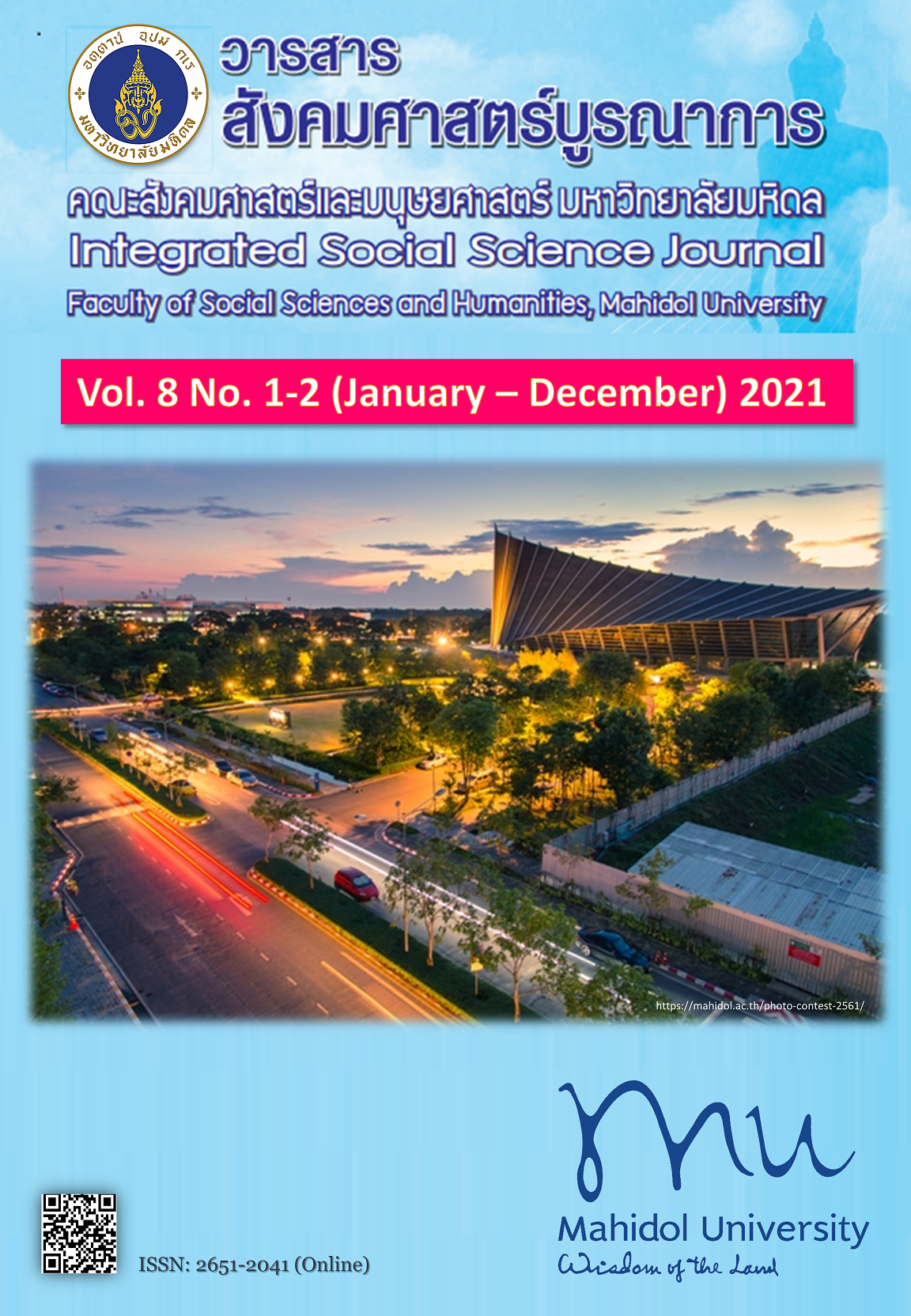How Financial Engineering, Corporate Governance, and Human Capital Management Help Firms to Survive During the Financial Crisis? A Case Study of CitiBank, N.A. Thailand
Main Article Content
บทคัดย่อ
For more than 2 decades after the 1997 Asian financial crisis, there are still discussions and arguments about the causes and remedies of this crisis. The author gathered data and information from international and domestic online documents and conducted in-depth interviews with related experts in order to answer the question: what are key factors for firms' survival during the Asian financial crisis? Using the case of CitiBank N.A. Thailand, the author found that crafting firm competencies, especially promoting its financial engineering governance (e.g., designing effective financial instrument and engineering safety system) could help CitiBank N.A. Thailand survive during the crisis. Furthermore, investing in its human capital management abilities (e.g., initiating talent management and development programs) and building a learning organization are important strategies that helped CitiBank N.A. Thailand handle the crisis and gained a competitive advantage. Lastly, the author offers some recommendations for regulatory agencies like Bank of Thailand (BOT) to oversee and enhance the performance of Thailand’s financial institutions.
Article Details

อนุญาตภายใต้เงื่อนไข Creative Commons Attribution-NonCommercial-NoDerivatives 4.0 International License.
- วารสารสังคมศาสตร์บูรณาการ มหาวิทยาลัยมหิดล อนุญาตให้สามารถนำไฟล์บทความไปใช้ประโยชน์และเผยแพร่ต่อได้ โดยอยู่ภายใต้เงื่อนไขสัญญาอนุญาต CC Attribution-NonCommercial-NoDerivatives 4.0 International (CC BY-NC-ND 4.0) โดยต้องแสดงที่มา/การอ้างอิงจากวารสาร – ไม่ใช้เพื่อการค้า – ห้ามแก้ไขดัดแปลงเนื้อหา
- ข้อความที่ปรากฏในบทความในวารสารฯ เป็นความคิดเห็นส่วนตัวของผู้เขียนแต่ละท่าน ไม่เกี่ยวข้องกับกองบรรณาธิการวารสารฯ (ซึ่งหมายรวมถึง บรรณาธิการ ผู้ทรงคุณวุฒิในกองบรรณาธิการ หรือ บรรณาธิการรับเชิญ) แต่อย่างใด ความรับผิดชอบองค์ประกอบทั้งหมดของบทความแต่ละเรื่องเป็นของผู้เขียนแต่ละท่าน หากมีความผิดพลาดใด ๆ ผู้เขียนแต่ละท่านจะรับผิดชอบบทความของตนเอง ตลอดจนความรับผิดชอบด้านเนื้อหาและการตรวจร่างบทความเป็นของผู้เขียน ไม่เกี่ยวข้องกับกองบรรณาธิการวารสารฯ
- กองบรรณาธิการขอสงวนสิทธิ์ในการตัดทอน/ปรับแก้ถ้อยคำบางประการเพื่อความเหมาะสม
เอกสารอ้างอิง
Kaplan, R. S., & Norton, D. P. (1996). Translating strategy into action the balanced scorecard. Harvard Business School Press.
King, M. R. (2001). Who triggered the Asian financial crisis? Review of International Political Economy, 8(3), 438–466.
Laothammatas, A. (1992). Business associations and the new political economy of Thailand: From bureaucratic polity to liberal corporation. West view Press.
Zestos, G. K. (2016). The global financial crisis: From US subprime mortgages to European sovereign debt. Routledge, Taylor & Francis Group.


